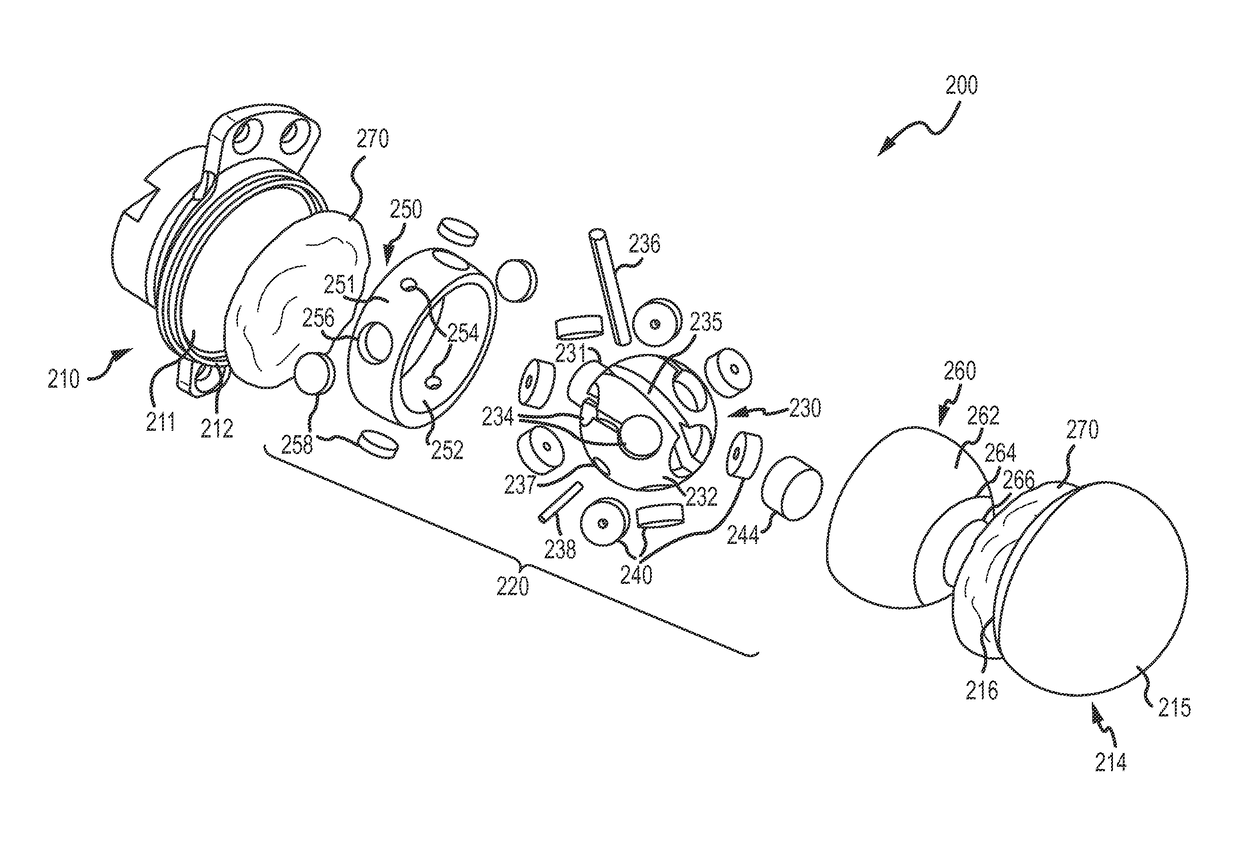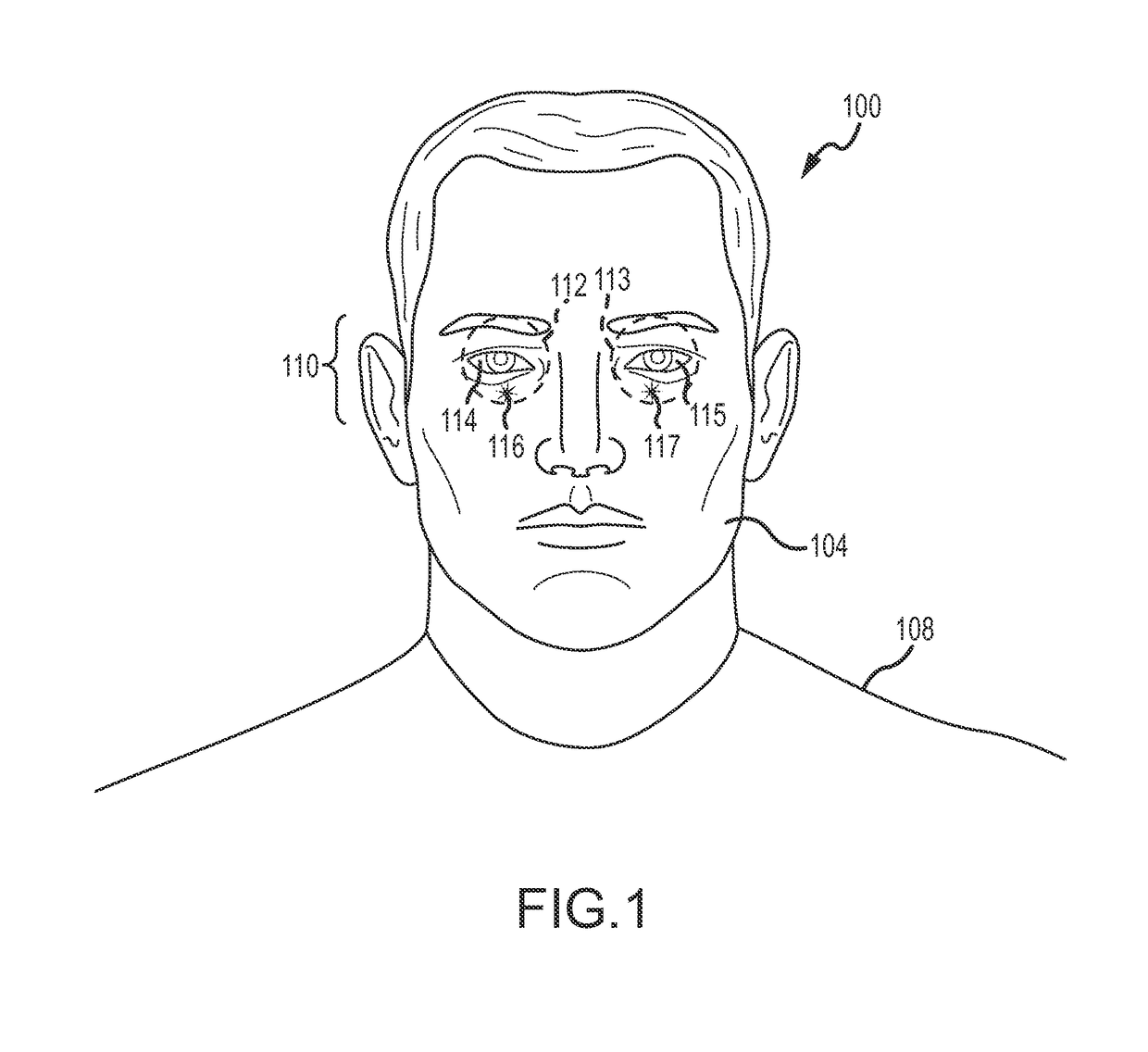Artificial eye with an internal electromagnetic drive
a technology of electromagnetic drive and artificial eye, which is applied in the field of artificial eye simulating human or humanlike eyes, can solve the problems of increased manufacturing complexity and cost, unsatisfactory visible in some applications, etc., and achieve the effects of reducing complexity, reducing space, and small form factor
- Summary
- Abstract
- Description
- Claims
- Application Information
AI Technical Summary
Benefits of technology
Problems solved by technology
Method used
Image
Examples
Embodiment Construction
[0024]Briefly, embodiments described herein are directed to a compact, fluid-covered (not suspended), electromagnetically-gimbaled (or driven) eye that may be used in eye assemblies for animatronic figures as well as for human prosthetics. Each eye or eye assembly features extremely low operating power, a range of motion and saccade speeds that may exceed that of the human eye while providing an absence of frictional wear points (e.g., between the eyeball or inner sphere and an eye socket). The design of the eye assembly has no external moving parts, which eases its installation in new and retrofit animatronic applications.
[0025]The eye assembly (or artificial eye or animatronic / robotic eye) described herein uses a centrally positioned, omnidirectional, pivoting bearing (or pivotal joint or mount) to support the inner eye or sphere. The bearing or pivotal joint can be attached to a post or base member, which, in turn, can be affixed to the outer shell (e.g., the inner half of the ou...
PUM
 Login to View More
Login to View More Abstract
Description
Claims
Application Information
 Login to View More
Login to View More - R&D
- Intellectual Property
- Life Sciences
- Materials
- Tech Scout
- Unparalleled Data Quality
- Higher Quality Content
- 60% Fewer Hallucinations
Browse by: Latest US Patents, China's latest patents, Technical Efficacy Thesaurus, Application Domain, Technology Topic, Popular Technical Reports.
© 2025 PatSnap. All rights reserved.Legal|Privacy policy|Modern Slavery Act Transparency Statement|Sitemap|About US| Contact US: help@patsnap.com



